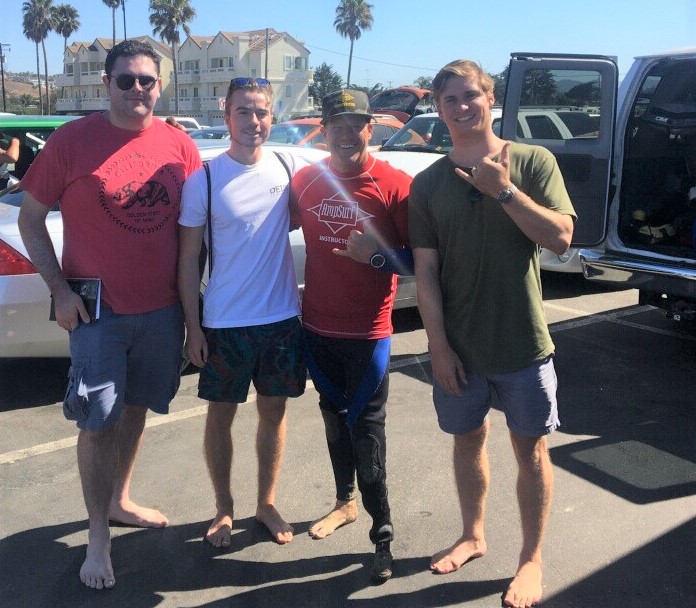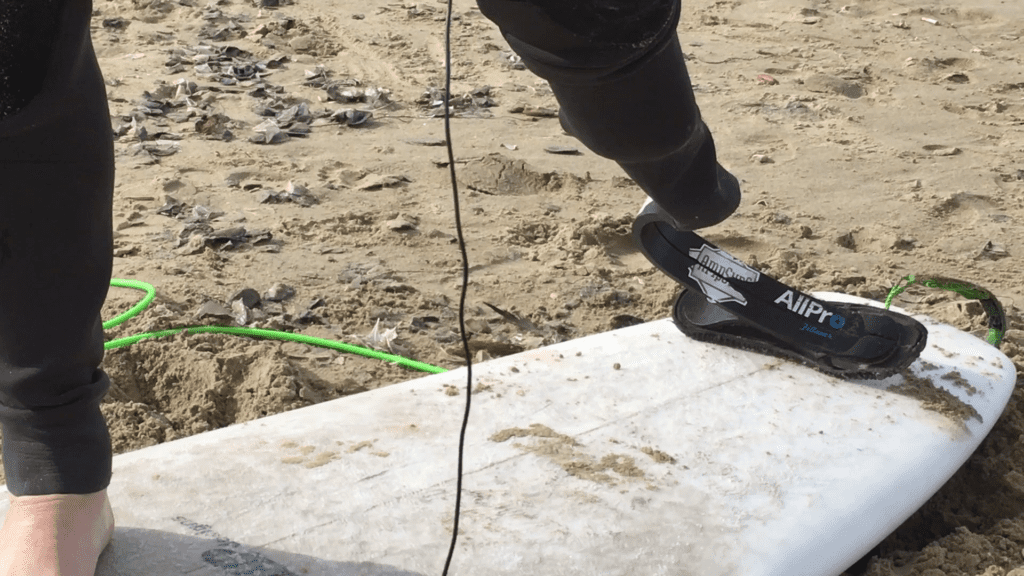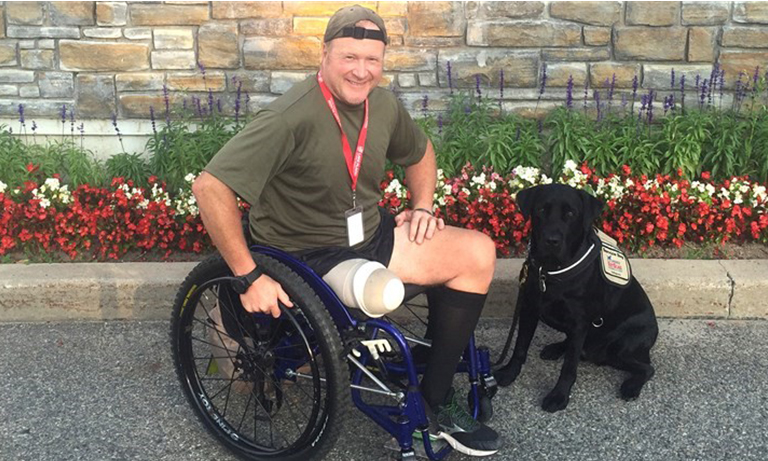Years after he was wounded by a rocket-propelled grenade, Peter Way said he was dangerously close to becoming another suicide statistic. But a dog named Rory helped the Army veteran from Georgia regain his life.
Now he’s hoping Cal Poly students will make Rory’s life a little easier by creating a more accessible vehicle ramp.
“If you can help me out, you’d be affecting two lives,” he told students in a video message. “Rory will last a lot longer. It’s about $50,000 to train a service dog, and Rory is extra, extra special.”
Way was one of multiple veterans who offered challenges to students through the Quality of Life Plus (QL+) program, which pairs vet needs with impactful student senior projects. The program was launched at Cal Poly by alumnus Jon Monett (Industrial Engineering, ’64) just over a decade ago. Since then, the program has expanded to several other universities throughout the country.
The challenges are issued to students at the beginning of the fall quarter, when students can bid on which projects they wish to work on. This year interdisciplinary teams were formed for five challenges, while teams of mechanical engineering students were formed for four others.
Here are some of the highlights of the latest challenges:
After Way was wounded by shrapnel in Afghanistan, the now-retired Army major endured 12 years of infections.
“The infections ate my leg up,” he told students. “In 2015, after 24 surgeries, I elected to have my leg amputated above the knee. So this is my life now.”
Throughout his recovery, the emotional pain matched his physical complications.
In January 2014, however, he was matched up with Rory, a black Labrador provided by America’s VetDogs. Service dogs like Rory are trained to calm vets, even waking them during nightmares that are common amongst those with PTSD.
Once Rory joined him, Way’s life quickly changed, his wife proclaiming, “I have my old husband back.”
“He helps me get around,” Way said in his video. “Rory goes everywhere with me, which includes riding in my vehicle.”
But Rory, now 7, has to jump into his lifted Toyota Tacoma truck. Commercial ramps are too steep for Rory, who will find it even more challenging as he ages. So Way asked students to create a less steep ramp, without too many adjustments, that will take up minimal space in his truck.
In a separate challenge, Way asked students to create a wheelchair lift that can fit in the cab of his truck.
Cassie Perando grew up wanting to be a doctor – but wound up becoming a nuclear electrician’s mate on the USS Nimitiz, from 2005-2012. After her Navy service, she suffered a traumatic amputation to her left arm, above the elbow, in a vehicle rollover accident.

Now the owner of a farm in Oregon, Perando has two challenges: First, the avid hiker is asking for a prosthetic arm that will allow her to carry a backpack.
With her current prosthetic, backpacks are uncomfortable and pinch her skin. She would also like the prosthetic to have a more camping-friendly terminal device – the feature at the end of the prosthetic that functions as a hand.
“I have a hard time fishing and getting in and out of my tent while I’m backpacking,” she said in her video message.
As a farmer, she also would like a terminal device that allows her to hold small items and grasp various tools.
“Something that would make it easier to hold screws for screwing, to clamp on to things with more force than this hook,” she said, pointing to her current terminal device.
After serving two tours of combat duty in Operations Desert Shield and Desert Storm, former Marine Dana Cummings lost his leg as a civilian in California.

The 2002 accident occurred in a 1976 Volkswagen van Cummings had painted like the Mystery Machine from the Scooby-Doo cartoons. Cummings’ left leg was broken in 17 places, and it eventually had to be amputated.
As part of his recovery, Cummings, who lives in San Luis Obispo County, took up surfing and eventually co-founded AmpSurf, a surf clinic for people with disabilities. He’s also a competitive surfer and a member of the U.S. Surfing Team, who was recently invited to compete in the Japan Open Adaptive Surf Contest, along with contests in Hawaii, England and Wales.
Cummings, now the president of AmpSurf, has three challenges, including a prosthetic foot that would have better surface contact with his surfboard. His current foot slips when he tries to pop up to his feet.

A better foot, he said, “would allow me to stay lower in my stance and be able to maneuver the board better in the waves.”
He would also like a more durable shell for his prosthetic foot (his current ones only last 2-3 months), and he would like students to create a surfboard sled for his AmpSurf camps.
Currently, attendees with paralysis have to be rolled to the beach in a wheelchair. A sled would allow them to be rolled to the water on top of a board.
“It’s just an easier transition versus using a beach wheelchair all the way into the water and doing the transition in the water,” he said.


